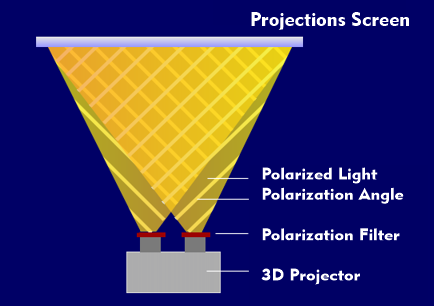3D cinema
There are various technical approaches for 3D projection and 3D cinemas, all of which use an additional optical solution. In terms of recording technology, 3D recordings are made with two cameras whose lenses have an interpupillary distance. As a result, the two cameras, or the 3D camera, record the image sequences as a viewer would see them if he were standing in the same place. The two offset image sequences are synchronized and must be reproduced synchronously. The slightest temporal offset would result in a completely unrealistic display.
During playback, one of the two image sequences, which differ in perspective, must be visible only to the left eye, the other only to the right. It is this separation that adds the stereoscopic impression to the two-dimensional image sequences.
The first technical approaches date back to the 1950s and were suitable for black and white films. The method used was based on a projection of red- green images separated by color filter glasses. Modern approaches use polarization and polarization glasses, also called polar glasses, for 3D projections, and shutter techniques and shutter glasses for 3D displays.
In polarization technology, the two images in from two projectors or one 3D projector are polarized by two projection filters located in front of the projection lenses in two polarization planes offset by 90 degrees and projected onto the projection screen as polarized image sequences. The polarization planes could be 0 degrees and 90 degrees, in practice one polarizes with linear polarization filters in V-arrangement with the angles of 45 degrees and 135 degrees. The separation of the two image sequences for the eye is done by polarization glasses, whose optical lenses transmit the light in the corresponding polarization planes. The eye, or the brain, integrates the two image sequences into a representation with good depth effect.
An improved representation with higher temporal resolution of fast motion sequences is achieved with HFR (High Frame Rate) cinema, which works with a refresh rate of 48 frames per second.

